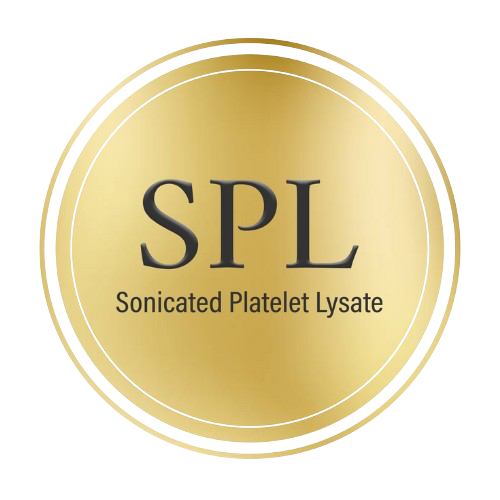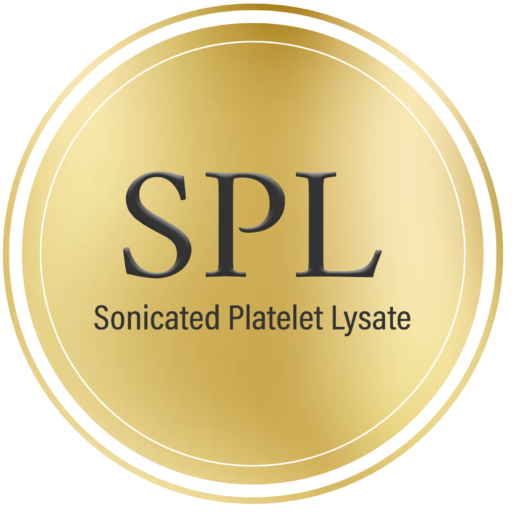
Mechanism and pathways behind SPL therapy in orthopedics
Bone healing is a complex and dynamic process that involves a sequence of events, including inflammation, cell proliferation, and tissue remodelling. The ability to accelerate bone healing is of paramount importance in the context of fractures, non-union fractures, and orthopedic surgeries. Traditional approaches to enhance bone healing have limitations, and the emergence of SPL presents a promising alternative. By harnessing the body's natural healing mechanisms, SPL has shown the potential to expedite the healing process and improve outcomes in various bone-related conditions.
Mechanism of action
Release of Growth Factors
PDGF: PDGF stands out as a pivotal growth factor in platelets, significantly influencing cellular processes critical for bone healing. PDGF is central to stimulating cell proliferation, migration, and angiogenesis. PDGF recruits essential cells to the injury site in bone healing, including osteoblasts and mesenchymal stem cells (MSCs). The recruitment of these cells is paramount for initiating new bone tissue formation and the effective repair of fractures. PDGF's multifaceted effects create a regenerative microenvironment, emphasizing its significance in the biological orchestration of bone healing processes.
TGF-β: TGF-β is a multifunctional cytokine with diverse roles in tissue repair and regeneration. In bone healing, TGF-βemerges as a key player in promoting the differentiation of MSCs into osteoblasts, the primary cells responsible for bone formation. Additionally, TGF-β enhances the production of extracellular matrix proteins, crucial for establishing the structural integrity of newly formed bone. TGF-β's dual impact on cell differentiation and matrix synthesis positions it as a fundamental growth factor in the cascade of events leading to effective bone regeneration. Its presence in SPL amplifies the regenerative potential of this biological therapy.
IGF: IGF is vital in promoting cell proliferation and differentiation, specifically for bone healing. Within bone regeneration, IGF contributes to the recruitment and differentiation of osteoblasts, pivotal cells in bone matrix synthesis. By facilitating the synthesis of bone matrix components, IGF supports the formation of structurally sound bone tissue. The collaborative action of PDGF, TGF-β, and IGF within the SPL milieu establishes a microenvironment conducive to efficient bone regeneration. The orchestrated interplay of these growth factors underscores their synergistic contribution to the regenerative potential of SPL in the context of bone healing.
Chemotaxis and Cell Proliferation
Beyond the release of growth factors, SPL facilitates bone healing by promoting chemotaxis, the directed movement of cells towards the site of injury, and inducing cell proliferation. Chemotaxis involves recruiting various cell types to the injured area, including osteoblasts and MSCs. SPL enhances this process by providing a concentrated source of chemotactic factors, creating a gradient that guides cells to the site of bone damage. Cell proliferation is critical to bone healing and the formation of new bone tissue. SPL stimulates the proliferation of osteoblasts and MSCs, accelerating the production of bone matrix and supporting the overall regeneration process .
Angiogenesis and Neovascularisation
Angiogenesis, the intricate process of forming new blood vessels, plays a pivotal role in the multifaceted landscape of bone healing. SPL emerges as a key player in promoting angiogenesis, contributing to the restoration and regeneration of injured bone tissue. The mechanism through which SPL achieves this lies in its capacity to release angiogenic growth factors, initiating a cascade of events crucial for establishing an adequate blood supply to the injured area. In bone healing, neovascularisation takes centre stage as a vital phenomenon. This process involves the creation of new blood vessels within the developing bone tissue, serving as a lifeline for nutrient delivery and waste removal. Neovascularisation is essential for sustaining the high metabolic demands associated with regenerating bone. SPL significantly contributes to this intricate process by fostering a well-vascularized network. By releasing angiogenic growth factors, SPL creates a conducive environment for developing new blood vessels, ensuring that the regenerating bone receives nutrients and oxygen. This accelerates the healing process and enhances the robustness and resilience of the newly formed bone tissue. The pro-angiogenic properties of SPL underscore its significance in orchestrating the complex interplay of cellular and molecular events that characterise successful bone healing. SPL's promotion of angiogenesis represents a critical facet of its regenerative potential, aligning with the broader goal of optimising outcomes in orthopedic and regenerative medicine contexts .
Applications in bone healing
Fracture Healing
Overview of the bone healing process: Fracture healing is a dynamic and intricate biological process crucial for restoring the integrity and functionality of damaged bones. This process unfolds in distinct stages, including inflammation, soft callus formation, complex callus formation, and remodelling. Each stage necessitates precise cellular interactions, orchestrated growth factor signalling, and extracellular matrix deposition. The coordinated sequence of events in fracture healing highlights the complexity of biological mechanisms, emphasising the need for targeted interventions that support and enhance these natural processes.
SPL in non-union fractures: Non-union fractures, marked by the failure of bones to heal within the expected timeframe, present a significant challenge in orthopedics. SPL is a promising adjunctive therapy for non-union fractures. SPL addresses the biological factors that impede the natural healing process by providing a concentrated source of growth factors. Clinical studies exploring the effectiveness of SPL in non-union fractures have yielded encouraging results. SPL therapy promotes bone union, reduces the time to healing, and offers a targeted approach to address the complexities associated with non-union fractures. The regenerative properties of SPL contribute to creating a conducive environment for robust and accelerated bone healing in challenging clinical scenarios .
SPL in fresh fractures: In the context of fresh fractures, where immediate and robust healing is paramount, SPL has been investigated as a potential accelerant. The application of SPL at the fracture site aims to enhance the recruitment of osteogenic cells, stimulate the synthesis of bone matrix, and expedite the formation of a structurally sound callus. Studies exploring the use of SPL in conjunction with traditional fracture management have demonstrated promising outcomes. SPL therapy contributes to accelerated healing, improved biomechanical strength, and reduced recovery times in fresh fractures. This application underscores SPL's role as a regenerative intervention that complements standard fracture care, offering a pathway to enhance the efficiency and effectiveness of the natural bone healing process .
Orthopedic Surgeries
Joint arthroplasty: Joint arthroplasty, encompassing procedures like total hip and total knee replacement, represents a critical intervention for individuals with damaged joint surfaces. The investigational use of SPL as an adjunctive therapy in joint arthroplasty aims to optimise postoperative healing and improve outcomes. SPL's potential to enhance tissue repair mechanisms and reduce inflammation is instrumental in fostering the early integration of prosthetic components. By contributing to the overall success of joint arthroplasty, SPL emerges as a promising avenue for augmenting the healing process and promoting improved functional outcomes in patients undergoing these intricate surgical procedures .
Spinal fusion: Spinal fusion, a surgical technique designed to stabilise the spine by encouraging the fusion of adjacent vertebral segments, has been enhanced through the investigational use of SPL. Acting as a biological enhancer, SPL's growth factors support the recruitment and differentiation of osteoblasts, critical cells involved in bone formation. This mechanism facilitates the development of a solid bony bridge between vertebral segments, potentially leading to improved fusion rates and enhanced clinical outcomes in spinal fusion surgeries. The application of SPL in this context underscores its role in advancing the biological processes critical for achieving successful spinal fusion and ensuring the long-term stability of the spine .
Osteotomy: Osteotomy, a surgical procedure involving the cutting and repositioning of bones to correct deformities or alter joint alignment, has benefited from investigations into the use of SPL. In osteotomy procedures, SPL has demonstrated its potential to accelerate bone healing and enhance the stability of surgical corrections. By promoting crucial processes such as cell proliferation, angiogenesis, and extracellular matrix synthesis, SPL contributes to expedited and robust bone union following osteotomy. This acceleration in the healing process reduces patients' recovery time. It introduces a valuable dimension to the precision and success of osteotomy procedures, positioning SPL as a supportive and regenerative adjunct in orthopaeic interventions.

